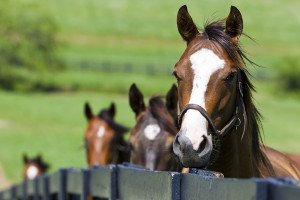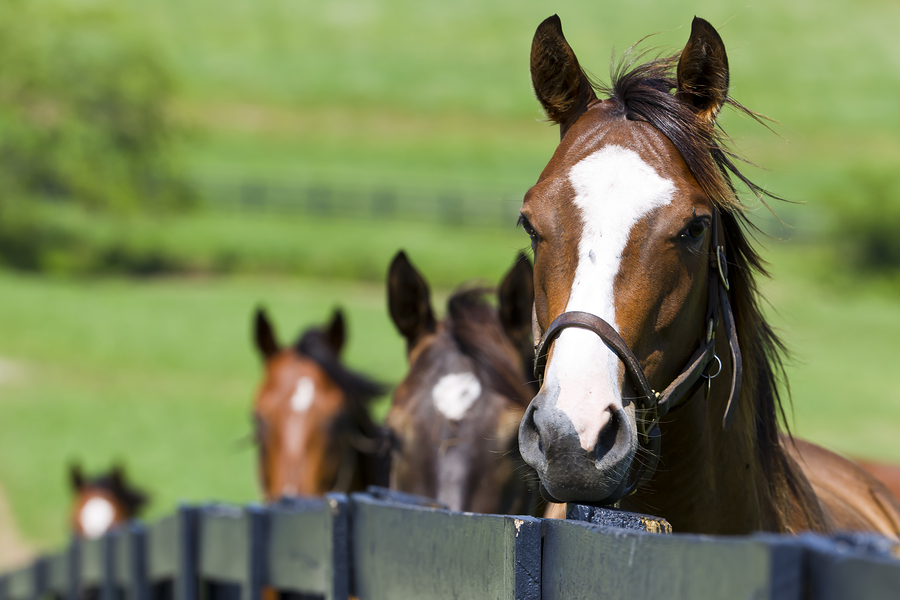A University of Kentucky professor has received a $1.4 million grant to conduct a multiyear study of health and safety practices of the Thoroughbred industry, which employs more than 10,000 people across Kentucky.
Jennifer Swanberg, a professor of social work and executive director of the Institute for Workplace Innovation at the university, received the funding for the Thoroughbred Worker Health and Safety Study from the U.S. Centers for Disease Control and Prevention. The study aims to fill a gap in an industry where there are few definitive statistics on injuries, illness and deaths related to the work.
Swanberg told the Lexington Herald-Leader the study is designed to find ways to improve farm horse farm safety and provide resources free to horse farms.
“I think everybody knows agriculture is one of our more dangerous industries,” Swanberg said.
Windfields Farm head Scott Mallory hopes the project will lead to education and safety reforms in the industry as well as serve as a resource to get farms the assistance they need.
“I think there’s always been an issue with farm safety,” said Scott Mallory of Windfields Farm and president of the Kentucky Thoroughbred Farm Managers Club. “And I believe this study will kind of help show where we need some education and help some reforms along, and maybe form a resource for them to go to get the help they need.”
Farm work is inherently full of risks, as is working with horses.
Swanberg is leading the study, designed to find ways to improve horse farm safety and provide those resources free to horse farms.
“When you talk to farm owners and managers … safety and health are primary concerns,” Swanberg said. “This was an area we identified that could help the industry.”
The study will take part in three phases, starting with in-depth interviews with farm owners, managers and human resources personnel about safety issues and including interviews with Thoroughbred farm workers recruited off-site, confidentially, about concerns and analysis of the data to determine what resources can be developed by UK to help improve safety.
Swanberg said it is encouraged that so many Thoroughbred industry groups and farms are eager to partner with the study.
“I think any time you talk about the health and safety of an industry, it can be perceived as a touchy subject,” Swanberg said.
About 40 farms have agreed to participate and a broad-based board from the Thoroughbred industry and from the farm-worker community will review all results. Information will be shared with all horse farms.
“I think it’s a study that needs to be done so we can make the workplace as safe as it should be,” said Mallory, of Windfields. “Obviously, when you’re dealing with animals, you need to be prepared.”
David Switzer, executive director of the Kentucky Thoroughbred Association/Kentucky Thoroughbred Owners and Breeders Association, said the KTOBA is also participating in the project.
“I’m told one of the biggest claims is for back injury, from lifting 50-pound bales of straw and not doing it properly,” Switzer said. “We’re all concerned about the health and welfare of the horse,” Switzer said. “Well, then, we ought to be concerned about the health of our employees as well.”
Was this article valuable?
Here are more articles you may enjoy.


 Amazon Ignored Its Own Worker Safety Studies, Senate Report Says
Amazon Ignored Its Own Worker Safety Studies, Senate Report Says  Congo Sues Apple Alleging ‘Pillaged’ Minerals in Products
Congo Sues Apple Alleging ‘Pillaged’ Minerals in Products  Baltic Sea Countries to Check Insurance on Tankers Moving Russian Oil
Baltic Sea Countries to Check Insurance on Tankers Moving Russian Oil  Advocacy Groups Ask FIO to Release Homeowners Insurance Data Collected by NAIC
Advocacy Groups Ask FIO to Release Homeowners Insurance Data Collected by NAIC 